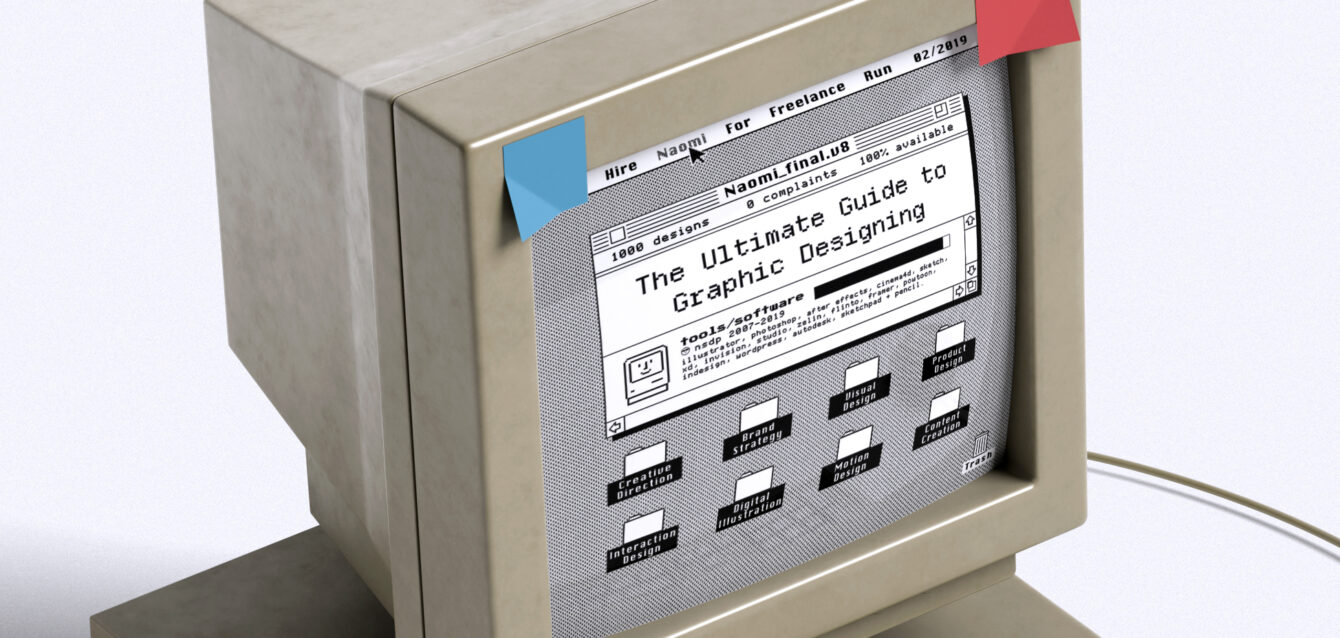Section 1: Understanding Graphic Design
1.1 Defining Graphic Design
Graphic design is the discipline of crafting compelling visual content to communicate messages and ideas. It blends art with technology using elements like typography, color, shapes, and imagery. Graphic designers transform abstract concepts into tangible visuals across print, digital, and interactive media—from branding and packaging to websites and motion graphics.
Whether it’s a minimalist logo or an intricate digital layout, graphic design serves as a powerful bridge between information and its intended audience.
1.2 Why Graphic Design Matters
In today’s image-saturated world, design has become a vital tool for effective communication. Good design doesn’t just look appealing—it simplifies, clarifies, and enhances understanding. Key functions include:
- Communicating Visually: Complex data or abstract ideas can be presented in an accessible, eye-catching format.
- Shaping Brand Identity: From logos to marketing materials, design defines a brand’s voice and presence.
- Enhancing User Experiences: Designers help create user-friendly digital interfaces that blend beauty with functionality.
- Boosting Marketing Efforts: Well-designed visuals can increase audience engagement and conversion rates.
- Presenting Information Clearly: Infographics and charts turn raw data into intuitive stories.
1.3 The Digital Shift in Graphic Design
Technology has dramatically reshaped how designers work. Here’s how:
- Advanced Software: Tools like Adobe Creative Cloud, Figma, and Sketch enable precise, professional-quality design.
- Web & UI/UX Design: Digital interfaces now demand user-centric design, blending visuals with functionality.
- Motion Design: Animations and dynamic content are increasingly used for storytelling and branding.
- Responsive Layouts: Designers must adapt layouts for various devices and screen sizes.
- New Frontiers: Innovations like AR, VR, and AI are opening exciting possibilities for immersive and personalized design experiences.
Section 2: Core Elements and Principles
2.1 Building Blocks of Design
Every design is made up of essential components:
- Line: Guides the eye and builds structure.
- Shape/Form: Defines space, whether flat (2D) or dimensional (3D).
- Color: Sets mood and attracts attention; rooted in psychology.
- Texture: Adds depth and realism, both tactile and visual.
- Typography: Manages how text is presented for clarity and tone.
- Space: Uses negative space to balance and organize.
2.2 Guiding Principles
Great design isn’t just what you use—it’s how you use it:
- Balance: Harmonious visual distribution, either symmetrical or asymmetrical.
- Contrast: Highlights important elements through visual differences.
- Emphasis: Draws focus to key areas or information.
- Unity: Ensures that every element feels part of a cohesive whole.
- Hierarchy: Prioritizes information, guiding the viewer through the design.
Section 3: Essential Tools of the Trade
3.1 Industry-Standard Software
- Photoshop: Ideal for image editing and digital artwork.
- Illustrator: Used for scalable vector graphics, such as logos and icons.
- InDesign: Preferred for layout-heavy documents like magazines and eBooks.
3.2 Popular Alternatives
- CorelDRAW: Great for print-based vector design.
- Sketch & Figma: Web-based UI/UX design platforms with collaboration tools.
- Canva: An intuitive design app for quick, template-based creations.
- Procreate: A go-to app for digital illustration on iPad.
- Affinity Designer: A cost-effective alternative for vector and raster work.
Section 4: Design Foundations in Practice
4.1 Composition Techniques
- Rule of Thirds: Placing focal points strategically for better balance.
- Grids and Alignment: Creating consistency and structure.
- Proximity & White Space: Grouping related content and allowing elements to “breathe.”
- Visual Hierarchy: Organizing content by importance.
4.2 Mastering Color
- Color Models: RGB for screens; CMYK for print.
- Harmonies: Schemes like complementary or analogous to create balance.
- Psychology: Different hues evoke different emotional responses.
4.3 Typography Essentials
- Font Categories: From classic serif to modern sans-serif.
- Pairing and Hierarchy: Balancing multiple fonts for readability and emphasis.
- Readability: Ensuring type choices don’t hinder comprehension.
Section 5: Designing Across Mediums
5.1 Print Media
- Brochures/Flyers: Visually appealing while informative.
- Posters/Banners: Bold and eye-catching for maximum visibility.
- Business Cards/Stationery: Reflect professionalism and brand personality.
- Packaging: Combines function with visual appeal to attract customers.
5.2 Web & UI Design
- UX Design: Prioritizes intuitive and pleasant user journeys.
- UI Design: Ensures visual elements are usable and attractive.
- Responsive Design: Adapts layouts for different devices.
- Wireframing & Prototyping: Previews design logic before development.
5.3 Branding and Logos
- Brand Identity: Visual language that expresses brand values.
- Logo Creation: Strategic, scalable, and memorable symbols.
- Identity Systems: Consistent design guidelines for branding assets.
Section 6: Exploring Advanced Design Techniques
6.1 Image Editing Mastery
- Layers & Masks: Enables detailed, non-destructive edits.
- Retouching & Restoration: Revitalizes and enhances photos.
- Adjustment Tools: Fine-tunes color, contrast, and clarity.
6.2 Vector and Illustration Skills
- Scalable Art: Essential for logos and icons.
- Infographics: Merges data with design for digestible insights.
- Character Design: Useful in branding, storytelling, and games.
6.3 Motion Graphics
- Animated Content: Ideal for videos, social media, and presentations.
- Logo Animation: Adds dynamic identity flair.
- GIF Creation: Eye-catching formats for short-form visual content.
Section 7: Design for Marketing and Social Media
7.1 Social Media Design
- Platform-Specific Content: Each platform has unique format needs.
- Stories and Posts: Short, impactful, and visually consistent.
- Ad Creatives: Persuasive and on-brand for conversions.
7.2 Email Campaigns
- Template Design: Mobile-friendly, visually engaging layouts.
- Call-to-Action: Prominent and persuasive elements to drive clicks.
7.3 Marketing Collateral
- Infographics: Combines visuals and data.
- Ebooks & Whitepapers: Structured, branded informational materials.
- Presentations: Clean, informative, and audience-specific.
Section 8: Professional Practice and Growth
8.1 Client Collaboration
- Set Expectations Early: Scope, timelines, and deliverables.
- Feedback Loops: Accept critique constructively and iterate accordingly.
8.2 Using Briefs Effectively
- Research Thoroughly: Understand the audience, purpose, and goals.
- Creative Interpretation: Go beyond the obvious to create standout work.
8.3 Teamwork in Design
- Cross-Functional Communication: Coordinate with developers, marketers, and writers.
- Collaborative Tools: Use platforms like Figma and Slack for seamless work.
8.4 Portfolio Building
- Show Range and Quality: Focus on your best and most relevant work.
- Update Regularly: Include recent projects and remove outdated pieces.
8.5 Staying Inspired
- Follow Trends: Stay current with tools, techniques, and design culture.
- Continual Learning: Take courses, join communities, and attend events.
Conclusion: Growing as a Graphic Designer
Becoming a standout graphic designer takes more than talent—it requires dedication, adaptability, and a thirst for knowledge. Master the core principles, keep up with new tools and trends, and always seek inspiration from the world around you. Whether you’re working in print, digital, or motion, great design has the power to connect, inspire, and transform.
Keep creating, stay curious, and push boundaries—your journey as a designer is just beginning.




